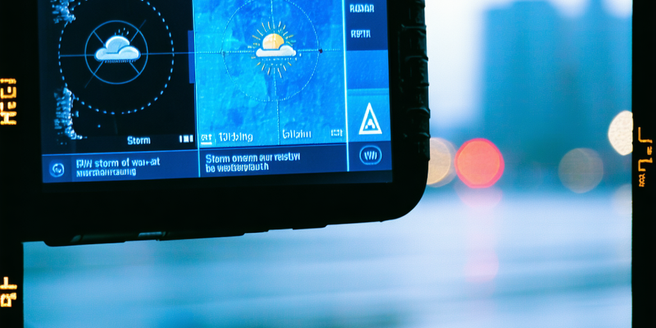
Understanding the Importance of Accurate Storm Tracking Apps
Accurate storm tracking apps are crucial for public safety, allowing users to anticipate severe weather conditions and make informed decisions to protect life and property. These apps use sophisticated algorithms and real-time data from meteorological sources to predict storm paths, intensity, and duration. The importance of precision cannot be overstated, as even minor miscalculations can result in dire consequences. A reliable app alerts users about sudden shifts in weather patterns, providing timely notifications and detailed forecasts. Several sectors, from aviation to agriculture, depend heavily on accurate weather data to minimize risks and optimize operations. As climate change leads to more frequent and severe weather events, investing in advanced storm tracking technology becomes even more critical.
Top Features to Look for in Winter Weather Apps
When selecting a winter weather app, certain features are indispensable for ensuring optimal functionality and user satisfaction. Real-time alerts and notifications are paramount, offering users up-to-the-minute updates on snowstorms, icy conditions, and temperature drops. An intuitive interface that simplifies complex data sets into easily digestible information enhances user experience. Additionally, integration with GPS for tailored weather forecasting based on the user’s location is highly beneficial. It’s also worth considering the app’s ability to provide detailed historical weather data to spot trends or patterns. Detailed radar maps, advanced tracking of storm cells, and compatibility with smart devices further augment the utility of a weather app. These features collectively empower users to plan their day or week meticulously, accounting for potential weather disruptions.
Comparison of Popular Storm Tracking Apps for Winter
Winter storm tracking apps vary in features and accuracy, making comparison essential for finding the most suitable option. Popular apps like The Weather Channel, AccuWeather, and Dark Sky offer robust forecasts and real-time updates. The Weather Channel is known for its extensive media content and map integration, while AccuWeather provides highly detailed forecasts and a MinuteCast feature. Dark Sky, favored for its hyper-local weather predictions, excels in user interface. Each app has unique strengths, but they all prioritize timely notifications and user-friendly interfaces. Evaluating these apps based on criteria such as data accuracy, ease of use, and customer support can help users make informed decisions, ensuring they choose a tool that is reliable for their needs.
How Real-time Data Enhances Storm Tracking Accuracy
In the realm of storm tracking, real-time data is invaluable for delivering accurate and timely forecasts. By harnessing live data feeds from weather stations, satellites, and radars, storm tracking apps can provide users with immediate information on changing conditions. This continuous flow of data allows for high-resolution modeling of storm patterns, enabling predictions about storm intensity, trajectory, and arrival times. The integration of artificial intelligence and machine learning enhances these predictions, continuously calibrating models based on new information. Such advancements lead not only to more accurate short-term forecasts but also improve long-term weather predictions, aiding in climate modeling and disaster preparedness efforts. Real-time data thus forms the backbone of effective storm tracking technology.
User-Friendly Interfaces: Why They Matter in Weather Apps
A user-friendly interface in weather apps significantly impacts the overall user experience and adoption rate. Clarity and accessibility in presenting complex meteorological data enable a broader audience to understand essential weather information. Intuitive navigation and well-organized dashboards reduce cognitive load, allowing users to swiftly access critical features like alerts and forecasts. These interfaces not only attract more users but also ensure that even those with limited technical skills can utilize the app effectively. Customizable layouts and responsive design ensure that apps cater to individual preferences and work well across various devices, such as smartphones, tablets, and computers. By simplifying technical jargon into concise, everyday language, user-friendly interfaces promote user engagement, making it easier for people to benefit from advanced weather forecasting technologies. Therefore, usability is as crucial as the app’s technical capabilities.
